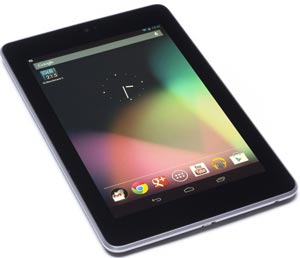 Sales of Android smartphones and cheap tablets are skyrocketing, but the same isn’t true of high-end Android tablets. While many models feature impressive hardware that could easily go toe to toe with the iPad, the app ecosystem just isn’t there yet.
Sales of Android smartphones and cheap tablets are skyrocketing, but the same isn’t true of high-end Android tablets. While many models feature impressive hardware that could easily go toe to toe with the iPad, the app ecosystem just isn’t there yet.
According to Canalys, out of the top 50 paid and free iPad apps in Apple’s US App Store, 30 percent are nowhere to be found on Google’s Play Store. Another 18 percent were available, but they were not optimized for tablets, which means they look and feel like oversized phone apps. Just 52 percent were available through the Play Store, optimized and ready for tablets.
“Quite simply, building high-quality app experiences for Android tablets has not been among many developers’ top priorities to date,” said Canalys senior analyst Tim Shepherd. “That there are over 375,000 apps in the Apple App Store that are designed with iPad users in mind, versus just a fraction of this – in the low tens of thousands – available through Google Play, underscores this point.”
Canalys expects all this to change, as the user base grows and Google introduces improvements to the Play Store. However, Google simply has to do more to support developers to invest time and money in high-quality Android apps for tablets. Since pricey Android tablets don’t sell well, the user base will remain limited. Most people who buy Android tablets go for cheap and small models, hence it is safe to assume that they are not willing to invest in premium apps and services, either.
The other problem facing Android developers is fragmentation. Apple developers need to design tablet apps for just two screen resolutions and form factors, both of which use the same aspect ratio. They don’t face nearly as many as many challenges as Android developers, who have to deal with dozens of different resolutions, form factors, Android versions, APIs and application processors.
Worse, at the end of the day Android developers have a very limited market for bespoke tablet apps, as the user base is still small and it’s growing from the ground up, i.e. growth is coming from low-end tablets that weren’t designed with anything serious in mind.





